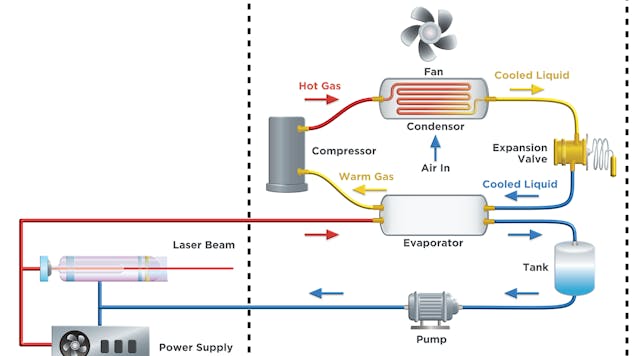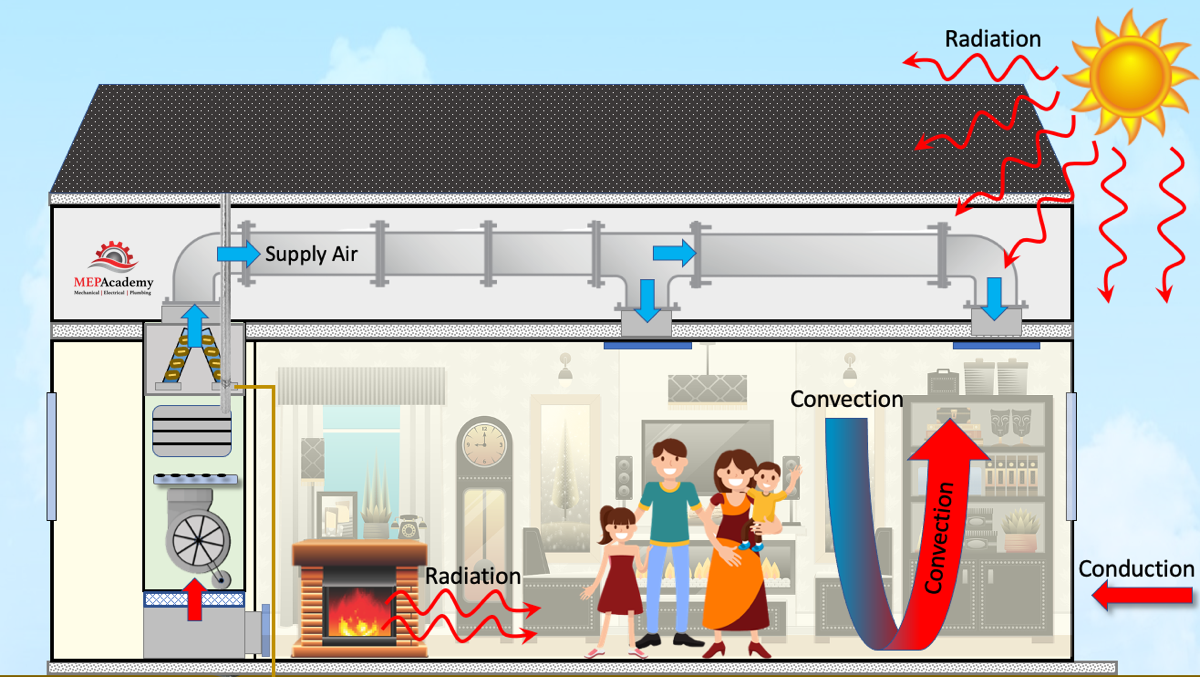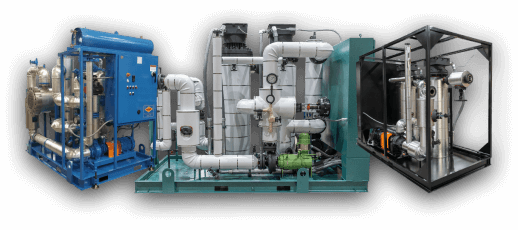10 Essential Thermal Innovations Driving DVS Heat Transfer Systems Forward
Wiki Article
Developments in Heat Transfer Equipments: What You Need to Know for Optimum Efficiency
Advancements in Heat transfer systems are transforming efficiency across numerous sectors. Advanced products like graphene and nanofluids promise substantial enhancements in thermal conductivity. At the same time, the combination of IoT and artificial intelligence uses opportunities for real-time surveillance and enhanced energy effectiveness. The landscape of thermal administration is rapidly developing. Understanding these growths is vital for attaining optimal system efficiency and sustainability in the future. What specific improvements are shaping this makeover?Emerging Products for Improved Heat Transfer

Advanced Heat Exchanger Designs
While traditional Heat exchangers have actually offered their function in different applications, progressed layouts are currently emerging to meet the raising needs for effectiveness and performance. These cutting-edge layouts, such as plate, shell-and-tube, and finned-tube Heat exchangers, incorporate enhanced area and improved circulation patterns to increase thermal transfer prices. On top of that, compact designs permit for minimized space demands without jeopardizing effectiveness. Advanced products, such as compounds and corrosion-resistant alloys, in addition boost longevity and performance under extreme problems. In addition, simulation technologies and computational liquid characteristics are increasingly utilized to improve these styles, guaranteeing peak Heat transfer features. As markets seek to minimize energy intake and make the most of outcome, the fostering of sophisticated Heat exchanger styles is essential in achieving these goals.The Duty of Nanotechnology in Heat Transfer
Nanotechnology plays a vital duty in boosting thermal conductivity within Heat transfer systems. By controling materials at the nanoscale, scientists have attained significant improvements in energy performance. These advancements not just enhance efficiency but also add to more lasting energy remedies.Improved Thermal Conductivity
Substantial advancements in thermal conductivity have actually arised via the application of nanotechnology, reinventing Heat transfer systems throughout different sectors. By integrating nanoparticles right into Heat transfer fluids and products, researchers have actually achieved amazing increases in thermal conductivity. These nanoparticles, such as carbon nanotubes, graphene, and metal oxides, enhance the Heat transfer properties because of their high surface and unique thermal features. The resulting compounds show boosted performance in applications ranging from electronic devices cooling down systems to renewable power technologies. The capability to customize the dimension, form, and composition of nanoparticles allows for enhanced thermal administration remedies. As a result, nanotechnology continues to play an essential function in the growth of extra efficient and effective Heat transfer systems, leading the way for boosted commercial applications.
Power Effectiveness Improvements

Integration of IoT in Heat Transfer Systems
The integration of IoT in Heat transfer systems presents the implementation of wise sensors that enhance operational effectiveness. These sensors allow real-time data tracking, enabling immediate changes and optimizations. This technological advancement has the potential to substantially boost efficiency and energy monitoring in Heat transfer applications.Smart Sensors Implementation
As Heat transfer systems progress, the assimilation of smart sensing units with the Internet of Things (IoT) has arised as a transformative technique. These sensors enable real-time tracking of pressure, temperature, and flow prices, improving system efficiency and dependability. By gathering and transmitting information, they facilitate positive upkeep, decreasing the danger of system failures. Additionally, smart sensors contribute to power financial savings by refining operational specifications based upon environmental conditions. Their capability to examine anomalies and fads permits informed decision-making, ensuring peak efficiency of Heat transfer systems. As markets increasingly embrace this technology, the execution of wise sensors stands to change exactly how Heat transfer systems are taken care of, leading the way for higher sustainability and improved efficiency outcomes.Real-Time Information Tracking
Just how can real-time information keeping track of improve the efficiency of Heat transfer systems? By integrating Internet of Points (IoT) modern technology, Heat transfer systems can utilize continual data collection from wise sensing units. This real-time tracking permits immediate analysis of circulation, pressure, and temperature level rates, enabling drivers to determine inefficiencies promptly. Changes can be made to maximize efficiency, minimize power consumption, and prolong devices life-span. Additionally, anticipating maintenance can be applied, reducing unanticipated downtime and expensive repair services. The ability to envision performance metrics via dashboards boosts decision-making, promoting a positive strategy to system monitoring. Eventually, real-time data keeping an eye on not just boosts operational performance however likewise adds to sustainability objectives within industrial processes.Energy Efficiency and Sustainability Trends
Power effectiveness and sustainability patterns are improving the landscape of Heat transfer systems, driving innovation and conformity throughout numerous sectors. Organizations are significantly prioritizing energy-efficient styles to minimize functional costs and reduce environmental effects. The combination of renewable resource sources is becoming more common, making it possible for Heat transfer systems to operate sustainably while satisfying governing requirements. Additionally, advancements in materials and technologies promote reduced power usage and enhance total efficiency. Lifecycle evaluations are likewise getting traction, allowing firms to examine the environmental effect of Heat transfer systems from manufacturing to disposal. This concentrate on sustainability not just sustains business responsibility yet additionally positions companies competitively in a market where customers progressively favor green services. Energy performance and sustainability stay essential considerations for future growths in Heat transfer innovation.Developments in Thermal Management Solutions
While the need for reliable Heat transfer proceeds to increase, technologies in thermal management services are emerging to deal with both efficiency and sustainability difficulties. Advanced products, such as stage modification products and nanofluids, are being established to improve Heat transfer performance - DVS Heat Transfer Systems. These materials enhance thermal conductivity and permit better temperature level policy in various applications. In addition, modern technologies like active thermal control systems are getting traction, making it possible for real-time changes to handle Heat circulation efficiently. These systems add to power financial savings and reduce the environmental effect of thermal procedures. Additionally, the assimilation of IoT in thermal monitoring promotes monitoring and predictive upkeep, ensuring enhanced performance and durability of Heat transfer systems. On the whole, these innovations represent significant strides towards more sustainable thermal administration techniquesFuture Directions in Heat Transfer Modern Technology
Arising advancements in thermal management options indicate an appealing future for Heat transfer innovation. Researchers are progressively concentrating on establishing materials with remarkable thermal conductivity and boosted power performance. Technologies such as nanofluids, which consist of put on hold nanoparticles, supply substantial renovations in Heat transfer performance. Furthermore, the integration of clever products that adapt to differing temperature level conditions is gaining traction, permitting more responsive and efficient systems. The increase of additive production techniques is also making it possible for the style of intricate Heat exchanger geometries that enhance fluid circulation. Additionally, the implementation of equipment knowing formulas is anticipated to reinvent the optimization of Heat transfer systems, promoting predictive maintenance and performance improvement. Jointly, these improvements are poised to transform the landscape of Heat transfer technologies in numerous industries.
Frequently Asked Concerns

Exactly how Do I Select the Right Heat Transfer System for My Application?
Picking the ideal Heat transfer system entails evaluating application demands, consisting of temperature varieties, fluid buildings, and effectiveness needs. Assessing system types, maintenance considerations, and cost-effectiveness additionally plays a crucial function in making an educated choice.What Are the Maintenance Requirements for Advanced Heat Exchangers?
Upkeep requirements for advanced Heat exchangers normally include regular examinations, checking for leaks, cleansing of surface areas, and ensuring optimal flow prices. Abiding by producer guidelines warranties efficient operation and extends the equipment's life-span.
Exactly How Do Environmental Factors Affect Heat Transfer Efficiency?
Ecological factors substantially affect Heat transfer effectiveness. Variations in temperature, air flow, and moisture effect thermal conductivity and convective Heat transfer, inevitably affecting system efficiency and demanding consideration throughout the design and operation of Heat transfer systems.What Safety Requirements Apply to Heat Transfer Solutions?
Safety and security standards for Heat transfer systems normally consist of standards from organizations such as ASME and ASTM. DVS Heat Transfer Systems. These standards address materials, style, and operational practices to ensure integrity, performance, and defense against threats in various applications
How Can I Troubleshoot Typical Heat Transfer System Issues?
Fixing typical Heat transfer system problems entails examining for leakages, ensuring proper fluid circulation, examining insulation integrity, and verifying temperature differentials. Determining these elements can aid maintain system effectiveness and stop more difficulties.Nanotechnology plays an essential function in improving thermal conductivity within Heat transfer systems. Substantial improvements in thermal conductivity have actually arised with the application of nanotechnology, changing Heat transfer systems throughout numerous sectors. Advancements in thermal conductivity via nanotechnology have actually led the means for exceptional enhancements DVS Heat Transfer Systems in energy efficiency within Heat transfer systems. Power efficiency and sustainability patterns are improving the landscape of Heat transfer systems, driving innovation and compliance across various sectors. The combination of IoT in thermal management promotes surveillance and anticipating maintenance, ensuring maximized performance and longevity of Heat transfer systems.
Report this wiki page